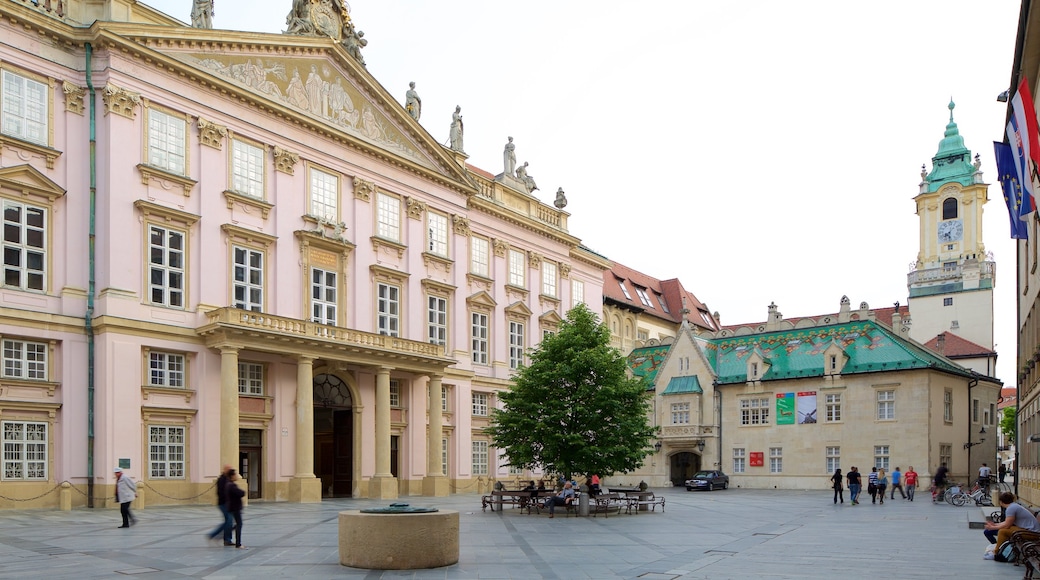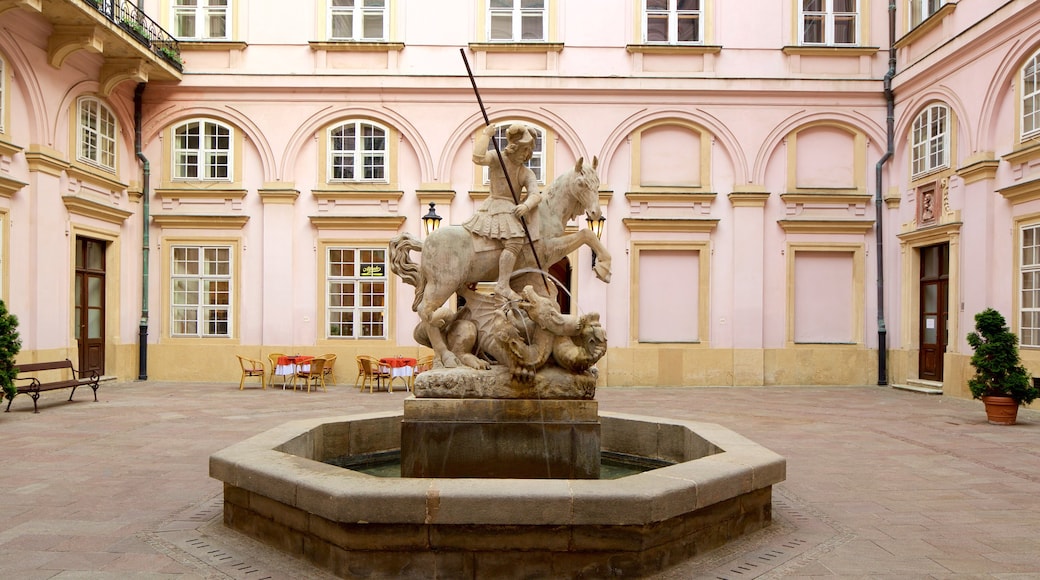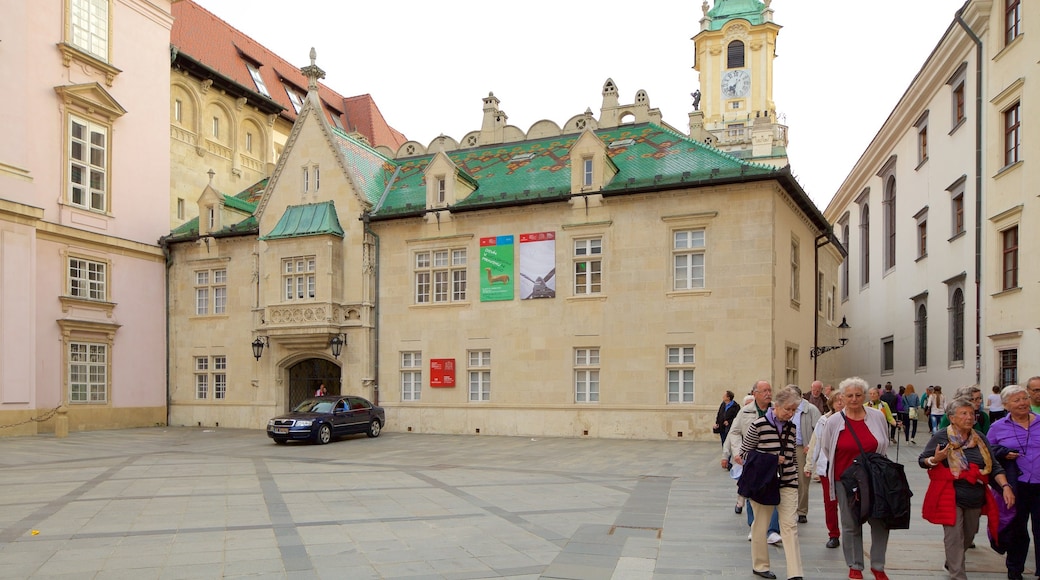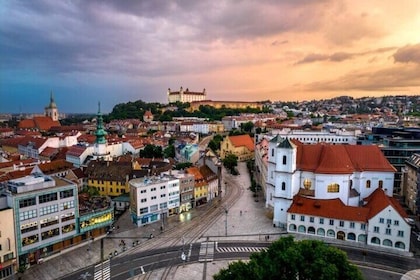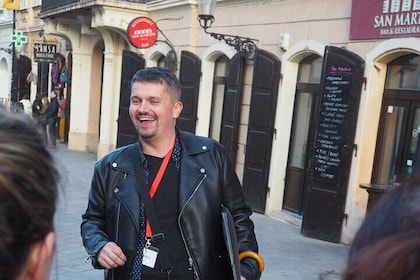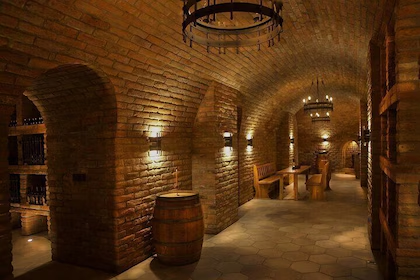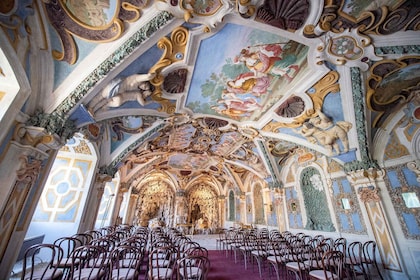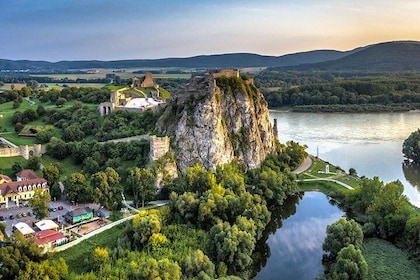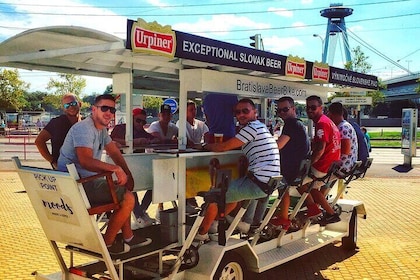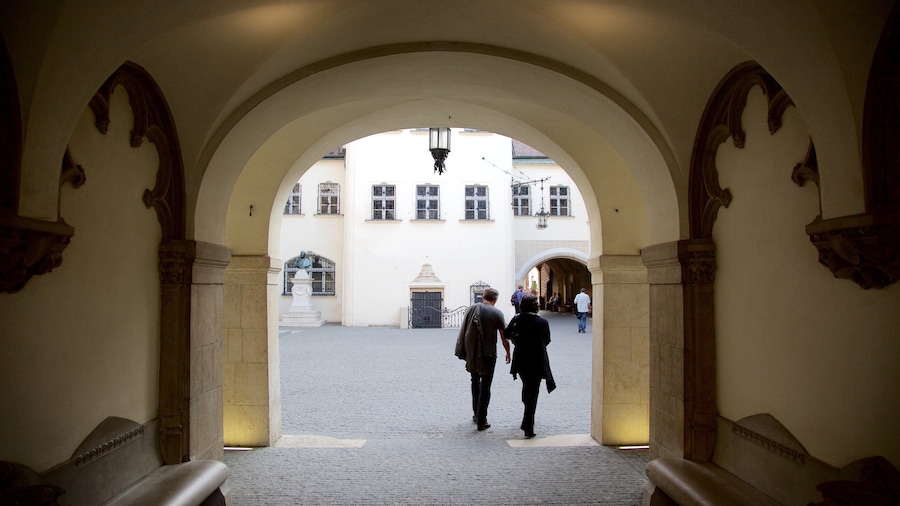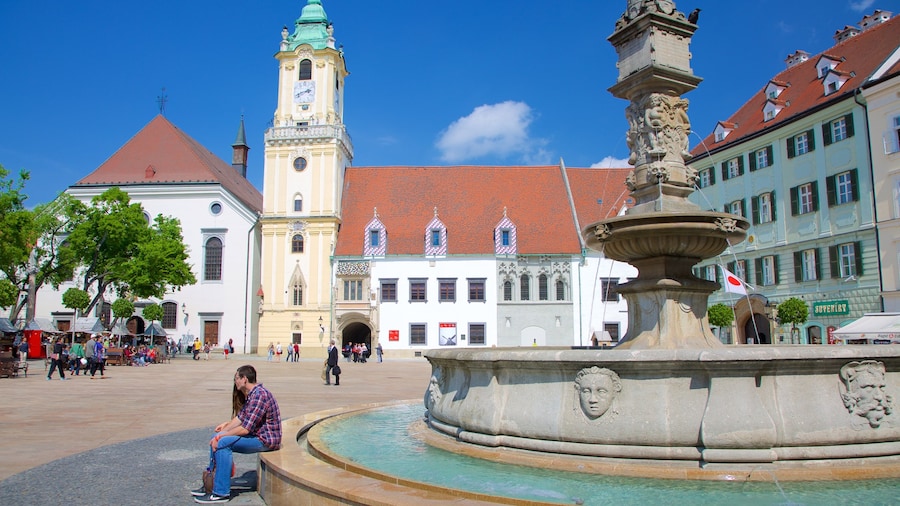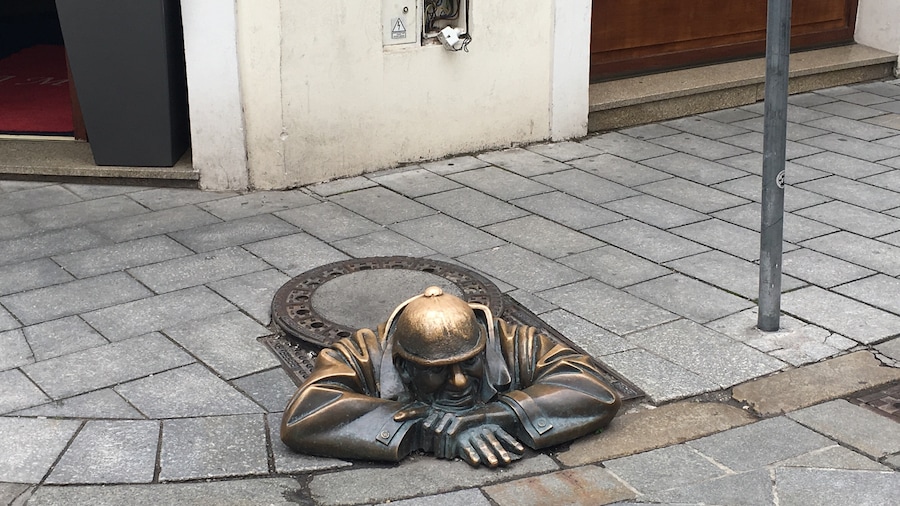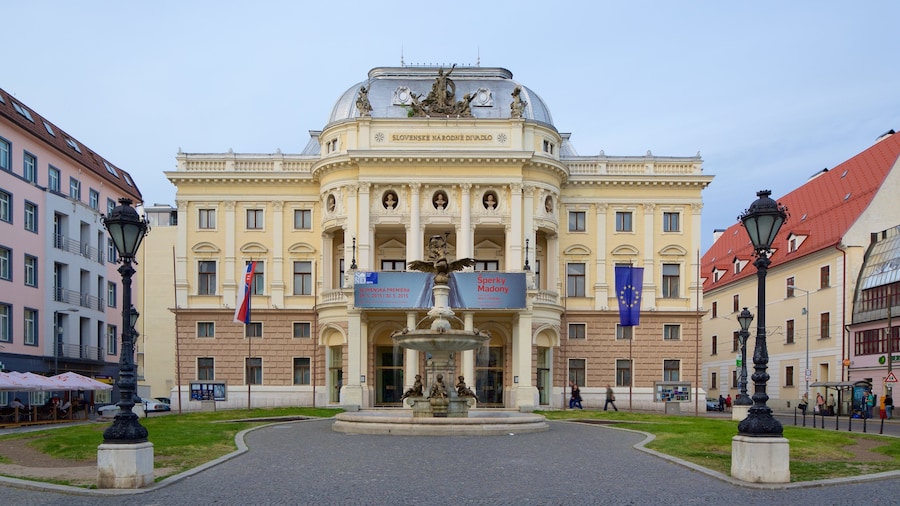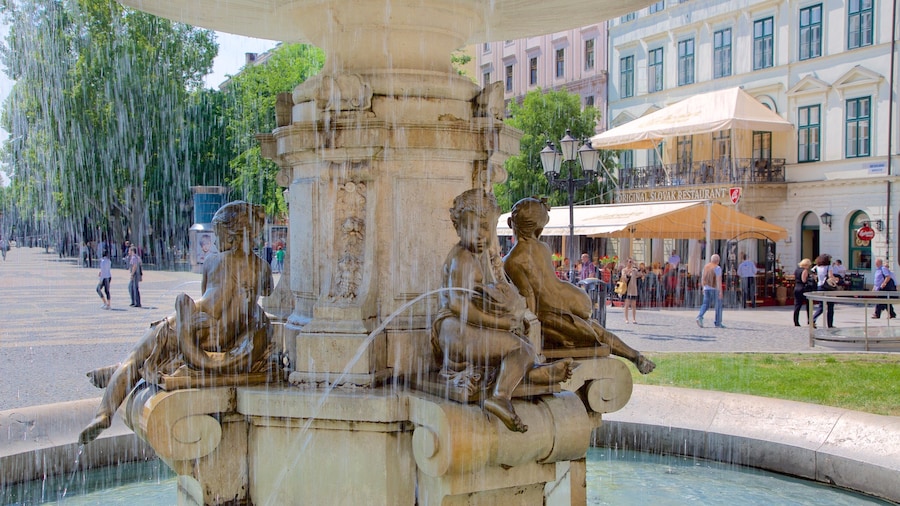Tour this magnificent salmon-pink building, which houses the offices of Bratislava’s mayor and witnessed important events in Slovakia’s history.
The pink-colored Primate's Palace is a magnificent 18th-century neoclassical structure, built for an archbishop. Marvel at its rich décor, view works of art that are hundreds of years old and see where historic agreements were signed.
Before your self-guided tour of the palace, look up at the tympanum, the triangular structure above the main entrance. It is topped by a large sculpture of an archbishop's coat of arms and hat, an indication of who used to reside here. Today, the building belongs to the city and is the office of Bratislava's mayor.
Walk through the main entrance and into a small courtyard where you will see a statue of St. George slaying a three-headed dragon. Wander around the halls of the palace, pausing to appreciate the display of six English tapestries. These 17th-century artworks were hidden in the walls and weren’t discovered until 1903. Each wall hanging depicts scenes from a tragic love story.
Visit the Hall of Mirrors, the historic room where several important agreements were signed, most notably an accord to end slavery and the Peace of Pressburg. This treaty was signed in 1805 and ended the war between Napoleon’s France and Austria. In the palace's entrance hall, a memorial tablet commemorates the signing.
While strolling through the palace’s rooms and halls, take note of the decorative flourishes. There are high ceilings, grand chandeliers, magnificent friezes, large mirrors and gold detailing. Many of the walls are bright and pastel colored, just like the exterior.
Visit the palace's chapel, dedicated to St. Ladislaus. Examine a painting of the saint above the main altar and see the 18th-century carved wooden pews.
The Primate’s Palace is situated in Bratislava’s old town, right next to Hlavne Square. As such, it is close to several bus and tram routes. The palace is open every day except Mondays and there is an admission fee.
